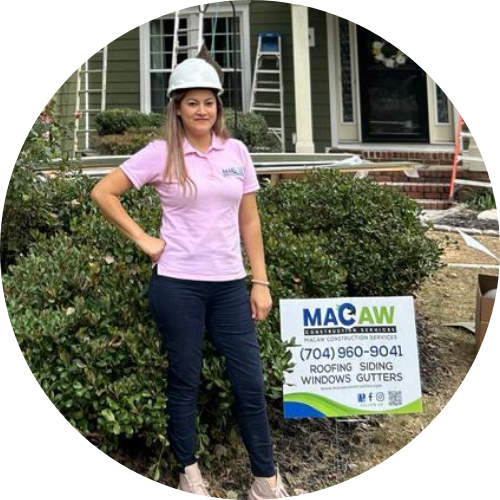Key Takeaways:
Early Detection is Crucial: Identifying a roof leak early, by looking for signs like water stains, drips, or sagging areas, can prevent more severe damage to your home.
Common Causes of Roof Leaks: Roof leaks are often caused by clogged gutters, damaged flashing, missing shingles, or issues with roof vents and insulation.
Professional Repairs vs. DIY: While minor roof leaks can sometimes be fixed with DIY solutions, hiring a professional is often the best way to ensure a thorough and long-lasting repair.
Discovering a roof leak can be a real headache, but knowing how to find a roof leak early can save you from bigger problems down the road. If you’ve noticed stains on your ceiling or water dripping where it shouldn’t, it’s time to get to the bottom of it. In this guide, we’ll walk you through some practical steps to identify and locate those pesky leaks. If you are looking to understand how to find a roof leak, we’ll help you figure out the best way to tackle roof issues and keep your home dry.
First Things First – How To Identify a Roof Leak
Not sure if you have a roof leak? Start by checking for water stains or drips inside your home, especially on ceilings and walls. Also, take a look at your roof for any visible damage like missing shingles or damaged flashing. These steps, followed by the next ones, will help you spot the problem and determine if you need a closer inspection.
Signs and Symptoms of a Roof Leak
Noticing water stains on your ceiling or walls? That’s often the first sign you might have a roof leak. Keep an eye out for sagging areas on your roof, which can indicate trapped water. Inside, watch for peeling paint or mold growth, both of which can be linked to a leaky roof.
A musty smell in your house or attic is another red flag. To identify and address the leak before it worsens, it is a good idea to have a professional evaluate your roof and attic if you see any of these symptoms.
Common Causes of a Roof Leak
Roof leaks can stem from several common issues. Clogged gutters are a frequent culprit, as debris can block the flow of water, causing it to back up and seep under the roofing material. Another issue is damaged flashing around chimneys, vents, and skylights. When flashing becomes cracked or loose, it can allow water to infiltrate the roof structure.
Broken or missing tiles or shingles are also common causes of leaks. These gaps expose the underlying layers of the roof to water. Poorly sealed roof penetrations, such as around pipes or vents, can become entry points for water if not properly addressed. In regions with cold climates, ice dams can form at the roof’s edge, causing water to back up and leak underneath shingles.
Locating the Source of the Leak
It’s important to remember that roof leaks aren’t always just about the usual suspects. Sometimes, damaged roof vents and issues with insulation can also be the culprits. Roof vents, for example, are crucial for keeping your attic well-ventilated and free from excess heat and moisture. But if these vents get damaged—whether from the weather, age, or poor installation—they can develop cracks or holes that let water seep in.
Similarly, insulation isn’t just there to keep your home cozy; it also plays a role in preventing leaks. When insulation gets wet, it can start to hold onto moisture, which leads to problems like mold and mildew. Over time, this trapped moisture can work its way through the roof layers, causing hidden damage that might not show up immediately. So, keeping an eye on your roof vents and insulation, and fixing any issues as soon as they arise, is key to maintaining a healthy, leak-free roof.
Other Potential Sources of Leaks
Roof leaks can also be caused by damaged roof vents and insulation issues. Vents, which help ventilate your attic, can get cracked or damaged over time, letting water in. Moisture-soaked insulation can trap dampness, leading to mold and hidden damage that might not show up right away. It’s crucial to regularly check and fix these areas to keep your roof in good shape.
How To Fix a Roof Leak
Fixing a roof leak quickly is key to preventing further damage. If you’re unsure how to find a roof leak, you might try some DIY fixes or call in emergency roof leak repair professionals for help. Depending on how serious the leak is, getting it addressed right away can save you from more costly repairs down the line.
DIY Solutions
Self-repairing roof leaks involve quick fixes like applying roofing cement or rubber sealant to minor cracks and ensuring gutters are clear to prevent water damage. Regular roof inspections help catch signs of wear, such as missing shingles or damaged flashing, early on. These proactive steps can help prevent more serious leaks and maintain the roof’s integrity.
Hiring a Professional for a Roof Leak
When it comes to addressing a roof leak, hiring a professional is often the best solution. Experts bring specialized knowledge and experience to diagnose the problem accurately and implement effective repairs. They can efficiently locate the source of the leak, even if it’s not immediately visible, and address underlying issues that may be contributing to the problem.
Professionals also have access to high-quality materials and tools that ensure repairs are done correctly and last longer. They follow safety protocols to avoid hazards associated with roof work and can provide warranties for their services, giving you peace of mind. Overall, while DIY fixes might offer temporary relief, a professional roof repair guarantees a more comprehensive and reliable solution, protecting your home from further damage.
Preventing Future Leaks
Preventing future roof leaks is all about regular inspection and vigilance. Start by keeping your gutters clean and free of debris to ensure water flows properly. Regular inspections are key—check for any signs of wear, like cracked shingles or damaged flashing, and address them quickly. Additionally, make sure roof vents are in good condition and properly sealed to keep water out. By staying on top of these tasks, you can extend the life of your roof and avoid costly repairs down the road.
When to Call Professionals Like Us At Macaw Construction for Roof Leaks
Not sure how to find a roof leak or how to handle one once you’ve found it? That’s where we come in. If you have recurring leaks, unclear damage, or simply need expert guidance, please do not hesitate to contact us at Macaw Construction. Our team specializes in quickly locating and repairing roof leaks, utilizing high-quality techniques and materials to ensure a long-lasting solution.
Frequently Asked Questions
How to find a roof leak?
To find a roof leak, start by checking the attic or ceiling for any signs of water damage or mold. Then, inspect the roof for missing or damaged shingles, cracks, or gaps. You can also use a hose to simulate rain and see where the water is coming in.
Can I find a roof leak on my own?
Yes, you can find a roof leak on your own if you are comfortable with heights and have basic knowledge of roofing. However, if you are unsure or have a complex roof, it is best to hire a professional.
What are some common causes of roof leaks?
Some common causes of roof leaks include damaged or missing shingles, cracked flashing, clogged gutters, and damaged roof vents. Extreme weather conditions and aging roofs can also lead to leaks.
How can I prevent roof leaks?
To prevent roof leaks, it is important to regularly inspect your roof for any damage and address it promptly. Keep gutters clean and clear of debris, and trim any overhanging tree branches. Additionally, consider investing in a roof sealant or waterproofing coating.
Do all roof leaks require immediate repair?
Not all roof leaks require immediate repair, but it is best to address them as soon as possible to prevent further damage. Small leaks can quickly become bigger and more costly issues, so it is important to address them promptly.
How much does it cost to fix a roof leak?
The cost to fix a roof leak can vary depending on the extent of the damage, the type of roof, and the location of the leak. On average, homeowners can expect to pay between $300-$1,100 for roof leak repairs.




